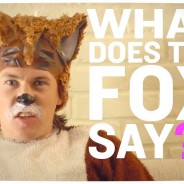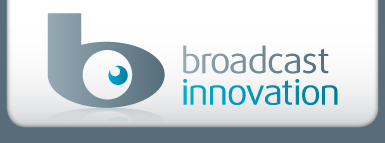What does the fox say? IBC 2013

“What’s new for you at IBC this year?” That perennial question is posed to trusted colleagues, associates and even competitors, who try to sum it all up with a single snappy sentence. Replies are of course many and varied, and it took me a little longer than usual to see what was really new this year, perhaps because “it” wasn’t “at” the show. Nevertheless a burning issue for IBC 2013 and a question that, by the time of writing, over 116 million viewers have asked themselves is: “What does the fox say?”
Bare with me on this one…
In early September 2013, whilst established global player Discovery became Europe’s biggest TV network and US disruptor Netflix announced 36 million subscribers, the more compact Norwegian broadcaster TV Norge was enjoying its own foxy global cross-media sensation. A four minute pre-series promo entitled “what does the fox say”, featuring “Norwegian national treasures” Ylvis (think HBO’s flight of the Concords meets Psy; in the woods) propelled both Ylvis and TV Norge to unprecedented global notice. Even before the new series was underway the promo had registered over 20 million hits online.
I noticed this not because I don’t mind foxes and rather like Norway, but mostly because I’m told what to watch by the junior digital natives (my kids) usually via YouTube. I wondered what drives the speed of such success, how did this audience grow so quickly? Apparently, traffic was initially driven by bloggers using Tumblr and Gawker, and it didn’t take long for Twitter and YouTube to do the rest. By October Ylvis are now appearing on US primetime network shows, whilst the online audience continues to grow.
Audiences on the move
There’s no shortage of new technology at IBC every year and in 2013 we all have to be equally conversant with the full range of converged technologies. The IT estate, the cloud, consumer technologies and social media are creating some highly disruptive options when blended with broadcasting. How can broadcasters really innovate when audiences are behaving so unpredictably? Can they change their game?
For example over the top TV (OTTtv) addresses viewers using internet delivery, and with personal browsers and devices providing a direct return path it’s possible to measure changes in audience behavior right down to an individual viewer. Although OTT currently only provides small revenue for broadcasters, it can influence audience behaviour significantly by extending programming and advertising to other screens and, crucially, to mobile audiences using the smartest phones ever.
Promoters of OTT also contend that media companies that do not evolve to provide an engaging and personalized video experience across all screens will lose market-share and eventually will disappear. If that’s true, then this future vision will also require huge amounts of personalised audience feedback to be processed intelligently. At IBC OTT solutions provider Ooyala stated that its analytics engine now processes over two billion events every day, derived from nearly 200 million viewers worldwide who watch their video on an Ooyala-powered player. OTT solutions providers at IBC were also featuring generic Google-style analytics and providing specialist data mining tools to capitalize on the intelligence gathered about audience movements. Using these tools to exploit the opportunities presented by TV everywhere and to provide a more agile response than typical broadcast ratings feedback allows.
The combination of social media and TV is now known as Social TV. Although predominantly US based, the announcement of a tie up between Nielsen and Twitter to deliver Nielsen Twitter TV Ratings also caught my eye. To date only the number of Tweets and respective Twitter authors has been measurable. A measurement of the audience of people who view those Tweets is required for TV networks, advertisers and agencies to know the true reach and influence of TV-related activity on Twitter. Twitter says that “conversation about live TV in the U.S. has grown dramatically over the past two years, 19 million unique people in the U.S. composed 263 million Tweets about live TV in Q2 2013 alone”.
It seems that media companies achieving broadcast innovation most successfully are those who can now tune-in to an audience instead of waiting for an audience to tune-in to them. In many ways this is almost the opposite of traditional broadcasting. By adapting their programming, making it discoverable through rich metadata and by occasionally short-circuiting the schedule using social media, broadcasters who already know their audiences are in good position to really drive TV everywhere.
This IBC’s Norwegian foxy example, although really just a highly original pop video used as a promotion for a popular national entertainment show, harnessed unexpected direct audience recommendation via social TV to achieve over 100 million views in less than a month.
The big guys are doing it big and yet, the small guys have every opportunity to do it even bigger. Whether it’s through original talent, great programming, converged technology or just great timing, perhaps there’s never been a better time for broadcasters to innovate.
In the meantime Hatee-hatee-hatee-ho!
First published in TVB Europe November 2013



